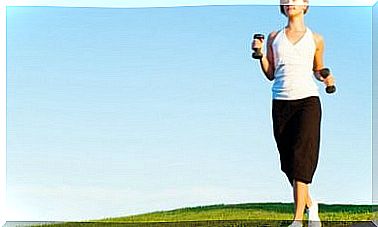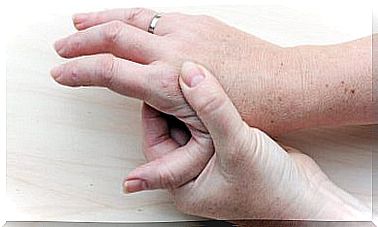Abs: How To Do Them Without Affecting The Back?
The abdominal muscles are those that line the wall of the abdomen. These are the internal oblique, external oblique, transverse abdominis, rectus abdominis and triquetrum. They are responsible for stabilizing the body, maintaining posture and protecting internal organs, among other functions.
Exercises to train the abdominals are very fashionable today, and not only for health, but also for aesthetics. Who doesn’t like to show off a flat and firm stomach?
However, many people are unaware of how to perform this exercise correctly. As a result, they end up feeling pain in the back, especially in the lower back. To prevent this, we explain some keys to exercising your abs without affecting your back.
First step: control your breathing
To exercise your abs well, it is essential to maintain good breathing, since it is the main method of supplying the muscles with the oxygen they need, as explained in a study published by the journal Breathe .
A common failure is holding your breath during exercise. On the contrary, the ideal is to breathe in before performing the abdominal contraction and exhale when relaxing. With regard to the latter, it is recommended to breathe out releasing the air through the mouth, letting it out little by little.
It should be noted that if you hold your breath, you increase the pressure in the abdomen by the effort of the diaphragm. If you add to this the pressure you do with exercise, you can lead to an injury, in addition to reducing performance during the execution of work.
Watch your lower back during sit-ups

Low back pain is one of the most common complaints in the adult population. This is mainly due to the type of life that prevails today; sedentary lifestyle and bad posture during work or study are the biggest trigger.
Although some mid-zone exercises are advisable to prevent and treat this condition, as detailed in a Mayo Clinic article, exercising the abdominals incorrectly can aggravate the problem rather than help.
Therefore, it is necessary to pay special attention to it during exercise. First of all, the ideal is to use a mat to protect the back from contact with the ground. Also, if the exercise is based on raising the legs, try not to detach the back. To do this, you can place your hands under the buttock.
On the other hand, if you have problems in the lower back, it is recommended to replace the classic abdominals with others. Isometric exercises, which require you to maintain a position without flexing your spine, can be good substitutes, according to a study published in the Strength and Conditioning Journal . They are static exercises that improve both lumbar and abdominal muscle tone, without straining the vertebrae.
Do sit-ups without straining your neck
In crunches —those typical sit-ups in which you lie on your back and pull your torso towards your knees— it is very common to strain the cervicals. When trying to raise the trunk, it is usually used force with the neck or with the back ; This can cause damage to the cervical area.
To avoid this, it is essential to focus on strength only with the abs. In addition, you can leave your hands holding the neck, without pulling it.
If you already have neck pain problems, it is better to do crunches by performing leg movements, leaving your head on the ground. Consult with a physical activity professional for the best exercises.
The best abs to avoid hurting you
As we have already mentioned, the typical abs are those in which, lying on your back, you pull your torso to get up. However, there are many other ways to exercise the abdomen area. In fact, they are much less harmful exercises for the back and neck.
For example, isometric exercises like the plank are extremely positive. In this sense, a study published by the journal Physical Therapy Rehabilitation Science concluded that various variants of the iron can work the core area in a good way.
This job consists of laying on your stomach, leaning on your forearms and the balls of your feet. You must form a straight line with the body, without raising the buttocks too much and without letting them fall.
You can do several sets of 30 seconds or 1 minute. Even during the posture you can incorporate variations, such as lifting one leg and then the other, alternating them.
Similarly, you can try side planks. To do them, you must start by lying on your side, with one leg on the other.
Leaning on your forearm, lift your hips and position your body in a straight line, contracting your abdomen. You can also place one hand pointing at the ceiling. Thanks to this exercise, you will be notably exercising your obliques.
Add good habits to your exercise routine
If you want to show off a flatter stomach and also improve stability and posture, the ideal is to do sit-ups. But you should take into account these tips that we talked about earlier, in addition to putting healthy lifestyle habits into practice.
Thus, with a good diet and adequate rest, you will be able to take better advantage of the training and notice the results you want in the silhouette, and especially in the abdomen. Clearly, your general health will greatly benefit from these changes, especially if you plan them with a professional.









